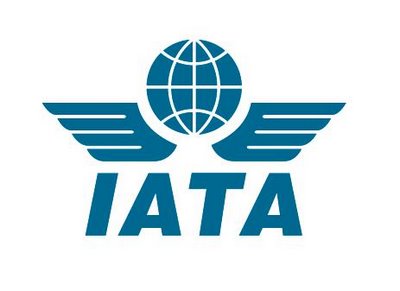Passenger Traffic Gets a Boost - Freight Continues to Stagnate

Passenger travel bucked the gloomy economic outlook with a 5.9% increase in July. This increase was likely based on the much more optimistic economic outlook that marked the beginning of the year. With business and consumer confidence now tanking, sluggishness in international trade, and high fuel prices, the expectation is for a weaker end to the year. We are already seeing this in the shrinking air freight markets, which were 0.4% down on the previous year, said Tony Tyler, IATAs Director General and CEO.
International passenger markets, which grew by 7.3% compared with July 2010, remain stronger on average than domestic markets which showed weaker growth of 3.5% year over year. Compared to pre-recession levels of early 2008, international passenger traffic has expanded by 12%. Had the industry continued to grow at the pre-recession pace of 8%, international markets would have been about 14% higher than todays levels and a quarter higher than pre-recession level. This confirms that the global financial crisis has cost airlines about two full years of growth.
Load factors for the total market (domestic + international) have improved by half a percentage point over July 2010 to 83.1%. This is equal to the highs recorded in Q3 2010. North American carriers (86.9%) and European carriers (84.1%) were in the lead. Latin American carriers saw the biggest improvement (from 76.5% last July to 79.6% this year).
- Demand for international air travel in July was 7.3% above the previous years level and considerably stronger than the 6.0% growth recorded in June. This boosted the international load factor to an impressive 83.1%. The increase goes beyond the seasonal fluctuation which normally produces a July spike owing to the Northern hemisphere vacation season.
- Latin American carriers were the strongest performers with a 10.3% increase over the previous July, supported by strong regional economies and liberalized markets. The gap with a capacity increase of 7.2% boosted load factors to 82.6%.
- Middle East carriers posted a 9.7% increase in demand, outstripping the 8.9% capacity increase. Load factors for the month stood at 81.4%.
- European carriers roughly matched the 9.3% increase in demand with an 8.9% increase in capacity. The load factor for the month stood at 85.1%, second only to North American carriers. While the European debt crisis continues to deliver economic uncertainty, the continents airlines are benefitting from a strong expansion of inward demand that is taking advantage of the weakened currency.
- North American carriers saw a 3.9% increase in demand exceeded by a 4.4% increase in capacity. Nonetheless, the regions carriers produced the highest load factor at 86.8%. The disappointing economic outlook continues to dampen demand.
- Asia-Pacific carriers had a capacity increase of 5.8% run ahead of demand growth of 4.9%. Airlines in the region are still adjusting to two major challenges: slower growth in China and continuing post-earthquake/tsunami weakness in Japan. Load factors fell slightly to 80.2%
- African carriers posted a 6.6% increase in demand against a 4.9% increase in capacity. The regions load factor stood at 73.1%.
Domestic Passenger Markets
- With very little growth since the end of Q3 2010, domestic demand has been much more sluggish than that for international travel. US domestic markets, which represent 50% of the worlds market, grew 2.1% compared to July 2010. China, with the second biggest domestic market (18% of the world), slowed abruptly to just a 5.1% increase in July. This accelerated the trend of slowing domestic traffic growth that began in the second half of 2010. After growing at around 20% in the first half of 2010, China finished the year with a 14.6% annual increase that has now slipped to single digits.
- The Japanese market is recovering slowly from the shock of the March earthquake and tsunami. While June showed a 20.3% decline on previous years levels, July was 16.7% down.
- Brazil and India recorded the highest growth rates of 17.8% and 20.6% respectively. Both were stronger than Junes performance.
Freight (Domestic + International)
- Freight markets, which reflect economic sentiment more quickly than passenger markets, showed a decline of 0.4% in July compared to the previous year. The nature of the weakness has changed. In 2010, airlines were losing market share to other modes of transport as world trade expanded. The earthquake and tsunami in Japan, coupled with the general economic gloom are now the main driving factors of continued weakness.
- Asia-Pacific carriers continue to show the weakest freight performance with a 3.6% decline compared to July 2010. Middle East and Latin American carriers showed the strongest performance with gains of 8.4% and 8.2% respectively.
- Freight load factors have declined significantly (1.8 percentage points) to the pre-recession level of 45.0%. Asia-Pacific carriers, the largest in the market, have seen load factors slip to 58.1% (from 60.2% in July 2010). While the region suffers from a major imbalance with strong outward flows of manufactured goods and weak inbound traffic, the scale of their home carrier operations allows for better capacity utilization.
The Bottom Line
July is the peak in the annual cycle for passenger traffic. This year was no exception. But even if the industrys performance could be classified as stronger than expected, we do face headwinds as we look towards the end of the year. Some of our challenges have a high percentage of government-made content. The recent downsizing of Air Berlin is a clear reminder of the high cost of the German departure tax on the economy, jobs and communities. Governments should not compromise aviations role as an economic catalyst for the short-term revenue gain of gratuitous taxationparticularly when economies remain weak, said Tyler.
ViewJuly traffic results



.jpg)




.png)
Comments
There are no comments yet for this item
Join the discussion